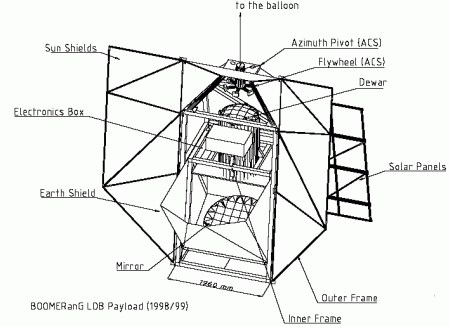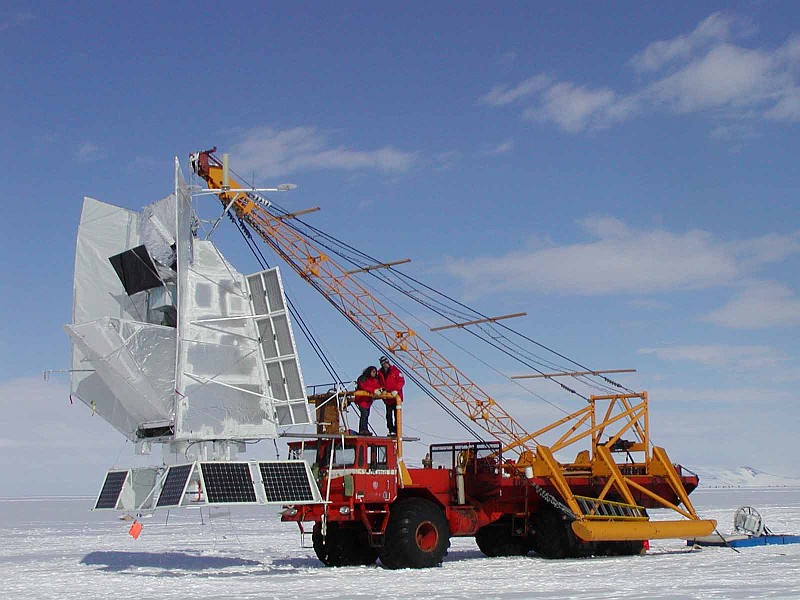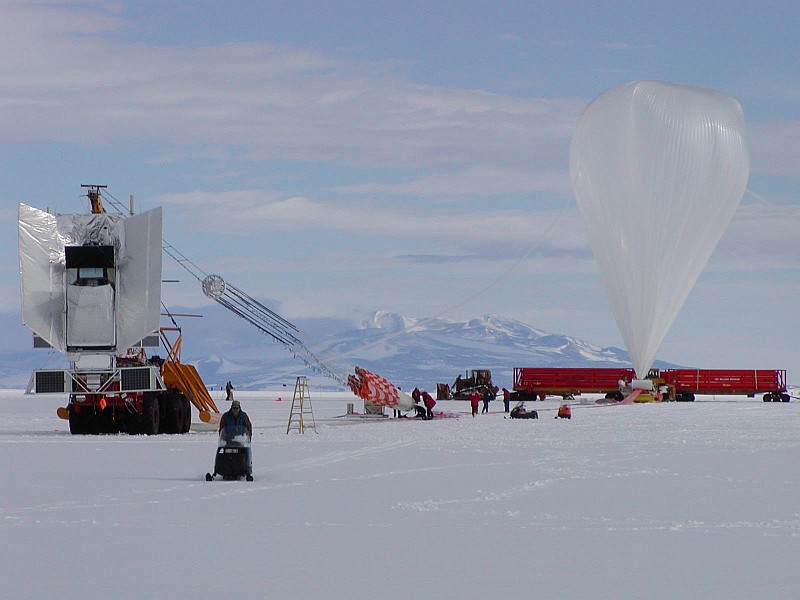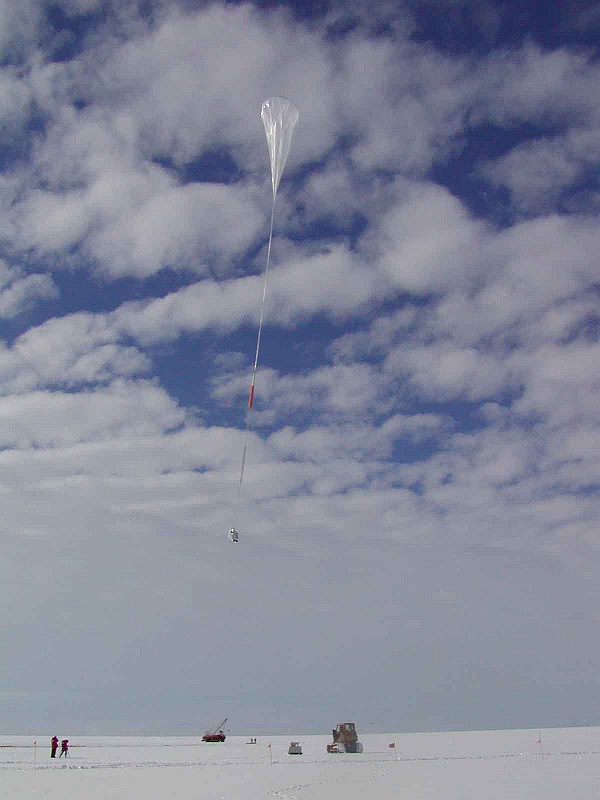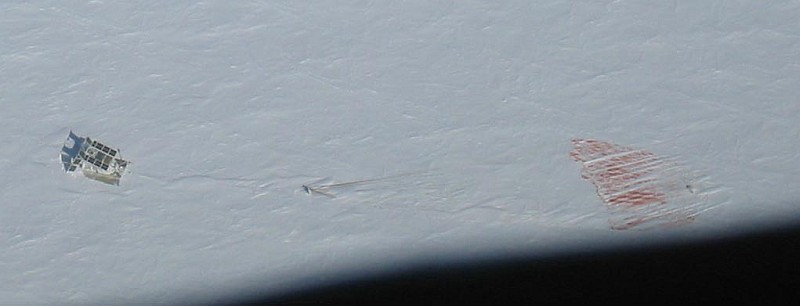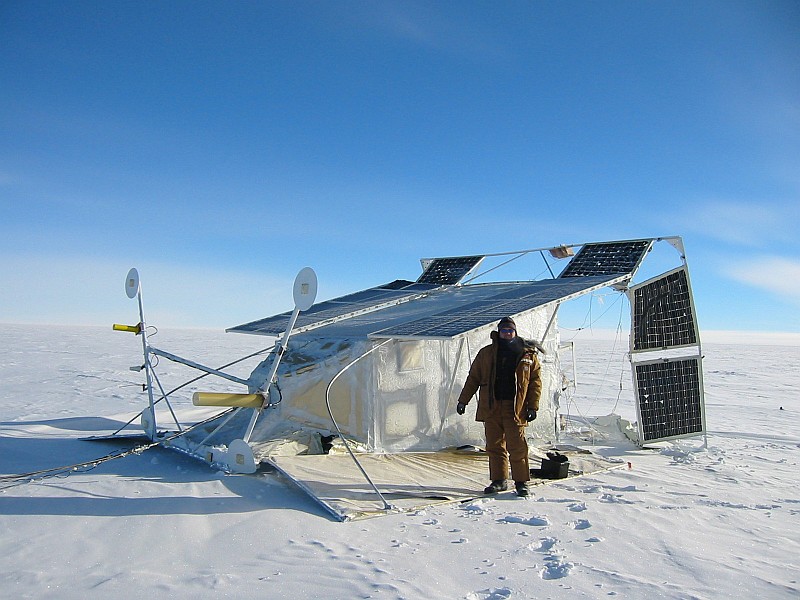Purpose of the flight and payload description
This telescope is the culmination of a great cooperative effort between Italian and American teams. It was designed to have the angular resolution and sensitivity necessary to measure the angular power spectrum of anisotropy in the cosmic microwave background at sub-degree scales, a region where there is a wealth of cosmological information.
The telescope consists of a 1.3m off-axis paraboloidal mirror feeding a pair of cold (1.5 K) ellipsoidal mirrors which reimage the prime focus onto an array of feed horns. These concentrate the incoming radiation onto bolometric detectors, cooled to 0.3 Kelvin by a helium refrigerator.
The pointing system consists of a pair of flywheels which torque the telescope against the flight train of the balloon. The rotation rate is adjusted via feedback from rate gyroscopes, a magnetometer, and tilt sensors. The telescope is fully pointable in azimuth, and can tip between 35 and 55 degrees in elevation. An on-board optical star-tracking camera allows accurate post-flight reconstruction of pointing.
Details of the balloon flight
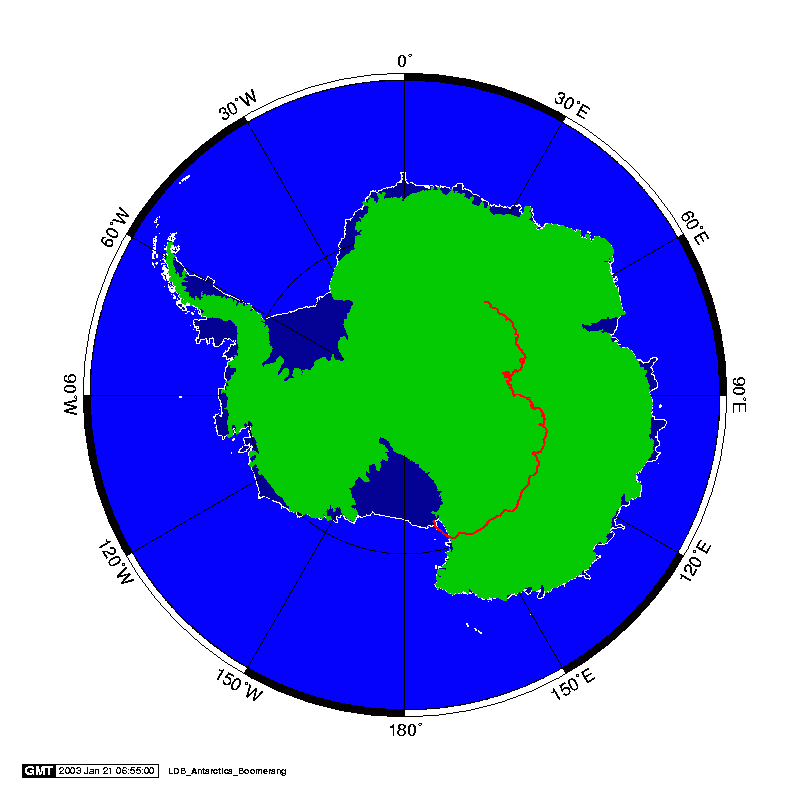
Balloon launched on: 1/6/2003 at 4:48 utc
Launch site: Williams Field, McMurdo Station, Antarctica
Balloon launched by: National Scientific Balloon Facility (NSBF)
Balloon manufacturer/size/composition: Long Duration Balloon Raven 29X - 1.000.000 m3 - SF3-29.47-.8/.8/.8-NA
Balloon serial number: W29.47-2X-59
Flight identification number: 516N
End of flight (L for landing time, W for last contact, otherwise termination time): 1/21/2003 at 6:03 utc
Balloon flight duration (F: time at float only, otherwise total flight time in d:days / h:hours or m:minutes - ): 10 d
Landing site: 69 miles S of Dome Fuji Station, Antarctica
Payload weight: 3650 lbs
Overall weight: 4753 lbs
The balloon was launched from Williams Field by dynamic method assisted by launch vehicle in the morning on January 6th, 2003.
Just before launch, the ground winds picked up and caused the balloon to toss around quite a bit when it was released but no damage to the balloon or gondola was detected.
After a initial ascent nominal phase, the balloon achieved float altitude near 130.000 feet and started an anti-clockwise route around the south pole (click on the image at left to see a map with the flight path). On January 11th the balloon experienced a drop of altitude, by unknown reasons (it could be that we are caught in some unusually cold air, or perhaps developed a small leak) so all the remaining ballast was released, achieving soon float altitude again but soon strated to slowly drop again.
Decision was made to terminate the flight on January 17th, sending a LC-130 aircraft but a sudden Search and Rescue Mission to retrieve the personnel of a downed helicopter that halted the base's activities prevented to do so. Then several cancellations and a storm prevented the termination flight so was decided to send the cout-down command by satellite to prevent that the balloon drift to remote areas of the Antarctic Plateau.
The termination was achieved in the evening on January 21th, and on the next day the payload was located. On January 27h a rescue team landed near the payload and recovered the presurissed vessel containing the scientific data.
This long duration flight was the second to be acomplished in the Antarctic, very useful scientific data was obtained.
External references
- BOOMERANG web site (Italy) University of Rome "La Sapienza"
- BOOMERANG web site (USA) Caltech Observational Cosmology Group
- A Measurement of the Angular Power Spectrum of the CMB Temperature Anisotropy from the 2003 Flight of Boomerang ApJ, 2005
- A Measurement of the CMB <EE> Spectrum from the 2003 Flight of BOOMERANG ApJ, 2005
- A measurement of the polarization-temperature angular cross power spectrum of the Cosmic Microwave Background from the 2003 flight of BOOMERANG ApJ, 2005
- Cosmological Parameters from the 2003 flight of BOOMERANG ApJ, 2005
- Instrument, Method, Brightness and Polarization Maps from the 2003 flight of BOOMERanG Astronomy and Astrophysics, 2005
- Properties of Galactic cirrus clouds observed by BOOMERanG Cosmology and Extragalactic Astrophysics (astro-ph.CO)
- The BOOMERANG experiment Space Sci Rev (1995) 74: 145.
1537If you consider this website interesting or useful, you can help me to keep it up and running with a small donation to cover the operational costs. Just the equivalent of the price of a cup of coffee helps a lot.

